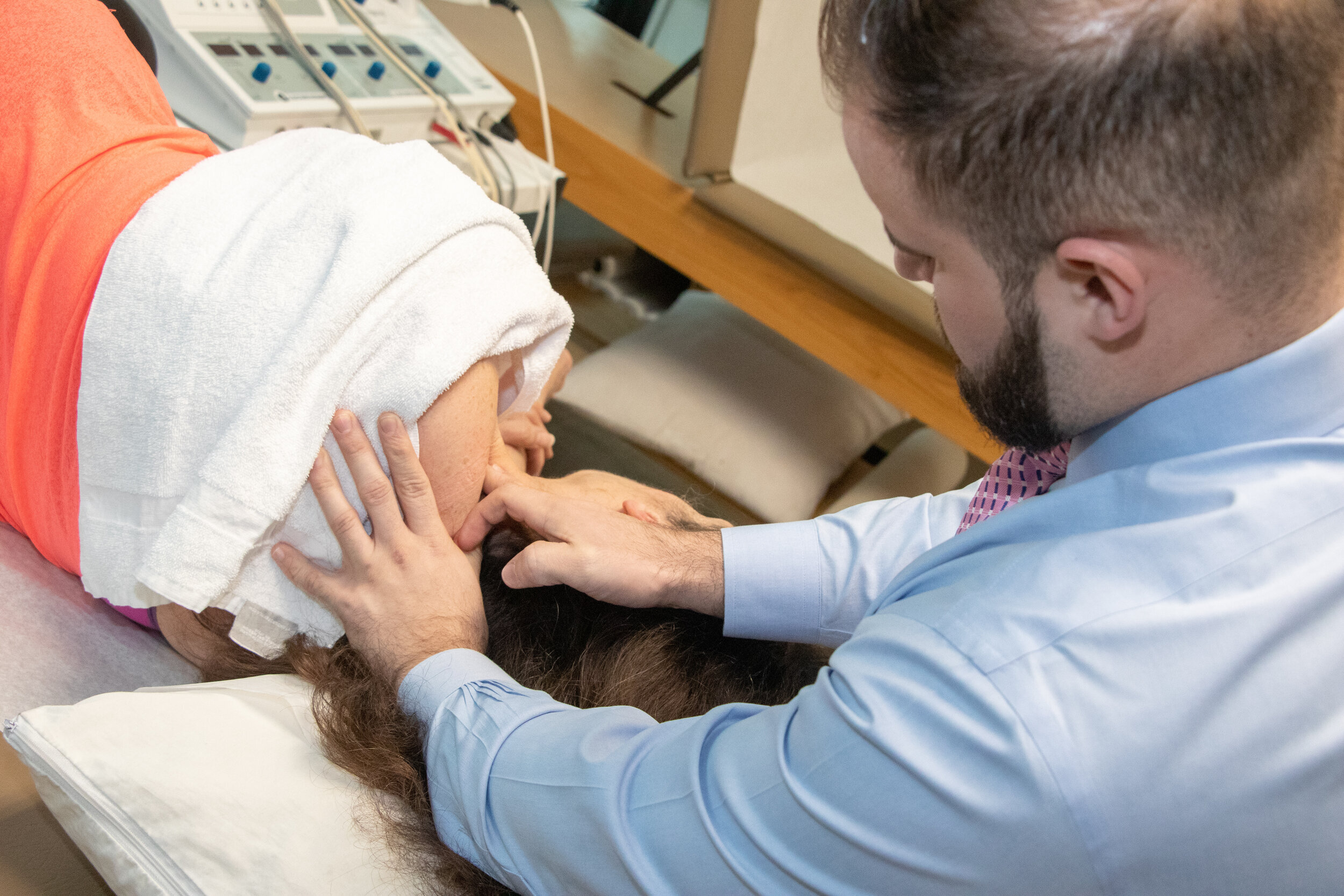We provide a wide variety of interventions for all orthopedic conditions.
Please ask for more information about what we can do for any of the areas listed below and more!
Myofascial Pain | Nerve Related Pain | Arthritis Pain | Post Operative Pain | Strength training | Neuromuscular Re-Education | Cardiovascular Training | Plyometric Training | Sport Specific Training | Massage, Soft Tissue Mobilization, Release | Spinal Mobilization & Manipulation | Instrument Assisted Soft Tissue Mobilization | Kinesio Taping, Dynamic Taping, & Other Taping Techniques | Ice, Heat, and Electric Stimulation
Myofascial pain
Physical therapists are well versed in treating a variety of myofascial conditions including muscle pulls/strains, tendon disorders, trigger points, and muscle spasm. These conditions may benefit from soft tissue mobilization, trigger point release, taping techniques, strengthening, stretching, or modalities.
Nerve related pain
Nerve related pain may be stemming from a variety of conditions including entrapments, inflammatory conditions, low back pain, neck pain, or traction injuries. Physical therapy offers a wide variety of treatments that treat the root cause of your nerve pain to help you return to function.
Arthritis related pain
Arthritis is one of the most common conditions seen by physical therapists. While arthritis itself may not be able to be reversed, the symptoms that you experience from the condition can often be improved and managed. Improving mobility of the affected joint as well as the surrounding joints can provide relief and allow you return to your normal range of motion. Strengthening the surrounding musculature can provide great benefit by decreasing the demand placed on the joints for force absorption and allow your muscles to share the load.
Post-operative Care and rehabilitation
Physical therapists work closely with your surgeon to facilitate a smooth return to function after your surgery. The most important role of a physical therapist is providing education about how you can maintain the optimal healing environment for your body after surgery which will vary based on your specific condition. A therapist will also work to identify the impairments that may have been present prior to surgery that need to be resolved for a full return to function
Neuromuscular Re-Education
Neuromuscular re-education is the technical term for improving how well the brain and nervous system move the body. Sometimes we change the way we move due to pain, or our movement needs to change to reduce our pain. Neuromuscular Re-education occurs through practice and repetition to regain our normal and healthy movement patterns.
Cardiovascular Training
An important and sometimes overlooked aspect of rehabilitation is cardiovascular training. Patient’s often take part in activities that are performed over a long duration and require a certain level of cardiovascular fitness. When conditioning is not up to par with the task, compensations can occur and place one at risk for injury. Cardiovascular Training is also necessary after any length of immobilization due to injury or surgery in order to return to your prior level of activity.
Plyometric Training
Plyometric training involves generating maximum force in order to jump or throw, as well as the ability to absorb force with landing tasks. Many injuries, especially at the knee and ankle, occur during the landing phase of an activity i.e. stopping, changing direction, stopping on skis, or jumping off a step.It is important to improve the strength required to improve these tasks, as well as training the tasks themselves to improve proper mechanics and tolerance to the task.
Sport Specific Training
At Summit Physical Therapy, our staff is highly trained in a variety of sports to provide you with a professional level of care using the most modern techniques. While strengthening, neuromuscular re-education, and hands on therapy may be what an athlete needs in the early phases of rehab, sports specific training is required for a full and thorough recovery. At our facility, we pride ourselves in that we do not provide generic programs. Every bout of rehabilitation will be tailored to your athletic needs.
Massage, Soft Tissue Mobilization, Release
Massage, soft tissue mobilization, and various release techniques are used to reduce muscle tension, reduce sensations of tightness, and improve range of motion. These techniques are effective in the short term for reducing symptoms, but are more effective in the long term when followed up with proper exercise including strengthening and stretching. Many professions employ these techniques, but none are as qualified as physical therapists to prescribe the proper follow up exercise to ensure the long term changes you desire.
Spinal Mobilization & Manipulation
Joint mobilization of the spine can be beneficial especially for a new onset spine pain. Spine mobilization can be performed using a variety of techniques and intensities chosen based on your presentation. As physical therapists, we are trained in administering spinal manipulation which can be beneficial for many conditions related to the spine as well as conditions of the hips, knees, shoulders, elbows, and wrists. Spinal manipulation has been referred to as “cracking” , thrust mobilization, or a grade 5 mobilization. Ask your physical therapist if this is a treatment that would benefit you.
Instrument Assisted Soft Tissue Mobilization
Instrument Assisted Soft Tissue Mobilization is the technical term for use using a tool/instrument for massage or release. These tools allow the clinician to work on body parts that hands may not adequately address or apply pressure in a manner that hands cannot perform.
Kinesio Taping, Dynamic Taping, & Other Taping Techniques
Taping techniques have been popularized with athletics in recent times gaining popularity amongst the general public as well as physical therapists. Taping techniques can be used for a variety issues and may help with pain, strength, or offloading irritated structures. Ask a physical therapist if taping could be beneficial for you!
Ice, Heat, and Electric Stimulation
Ice, Heat, and Electrical Stimulation and great adjuncts to treatment that can help with pain and may help with muscle relaxation. While any of these modalities in isolation may not be effective, they may help with altering pain during treatment or assist in reducing irritability in new injuries.





























